Abstract
1. The effects of bath applied chloroquine (Chlo) and of acute and chronic Chlo administration on skeletal muscle reactivity to electrical stimulation and to drugs have been studied on mouse hemidiaphragm preparations in vitro. 2. Chlo (0.15-150 micrograms) produced a concentration-dependent inhibition twitch and tetanic contractions due to direct muscle stimulation (MS). Acute and chronic administration of Chlo (45 mg kg-1, i.p. daily, for 3-28 days) progressively shifted the concentration-response curve to bath-applied Chlo to the right, with maximum effect occurring from day 14 of Chlo pretreatment. 3. Acute and chronic administration of Chlo decreased the twitch and tetanus tension, raised the minimal fusion frequency (MFR) for tetanic contraction to occur and did not alter the twitch/tetanus tension ratio. Tetanus tension unlike twitch tension was not significantly decreased on day 3. 4. Caffeine (5-500 microM)--and isoprenaline (0.001-0.8 microM)-induced potentiations of twitch contraction were attenuated in a concentration-dependent manner by bath-applied Chlo and by acute and chronic administration of Chlo. Higher concentrations of caffeine (0.1-5 microM) and KCl (10 mM-130 mM) produced contracture of the muscle which was sensitive to inhibition by Chlo (50-150 microM). Moreover, the spike contractions superimposed on caffeine contracture were more sensitive to the inhibitory effect of Chlo than the contracture. 5. The inhibitory effects of dantrolene sodium and (+)-tubocurarine on MS and on indirectly stimulated hemidiaphragm respectively were not significantly altered by acute and chronic administration of Chlo. In contrast, the inhibitory concentration-response curve to procaine was shifted to the right.(ABSTRACT TRUNCATED AT 250 WORDS)
Full text
PDF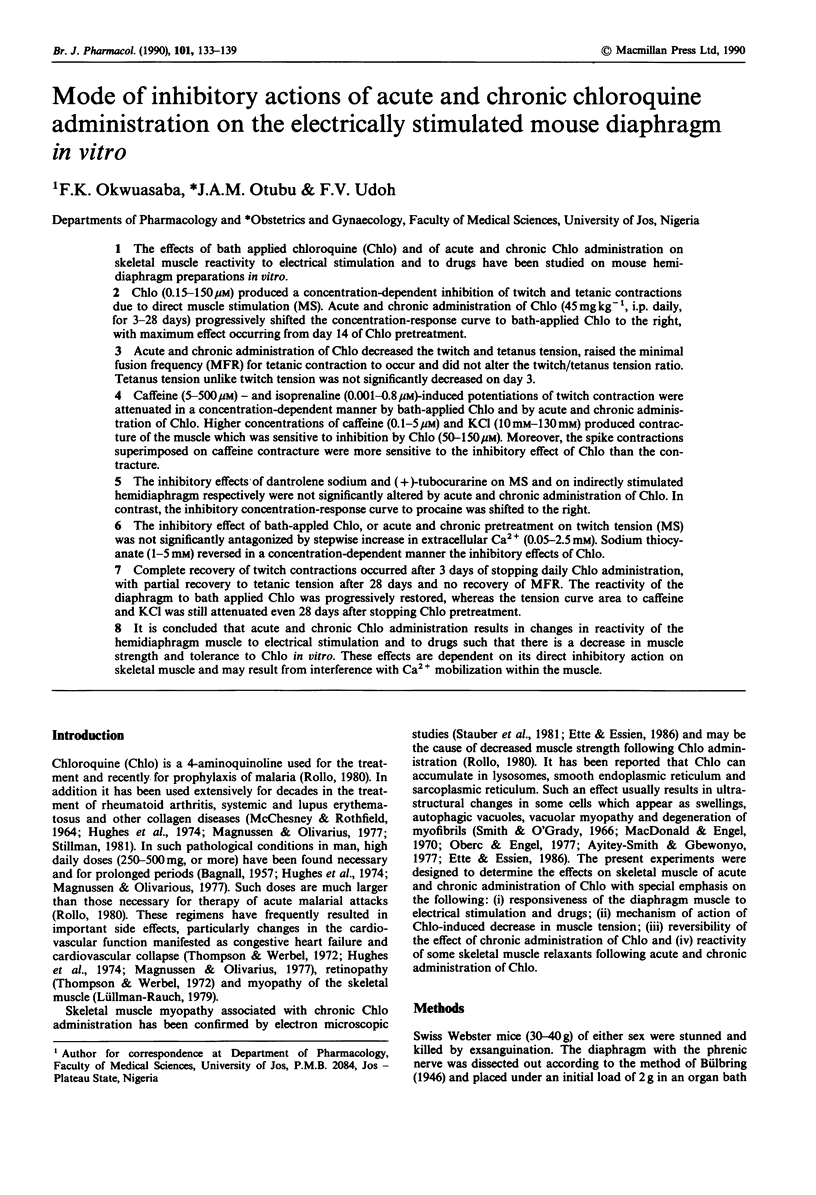
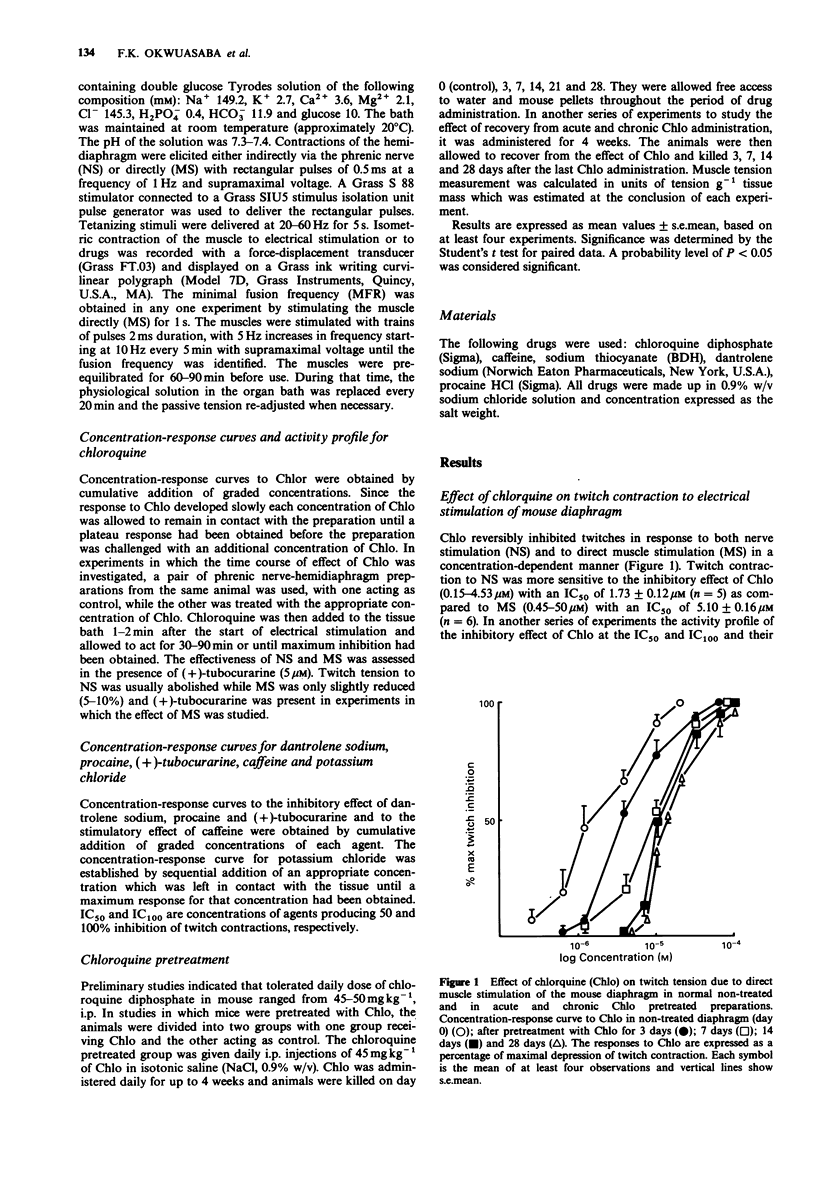
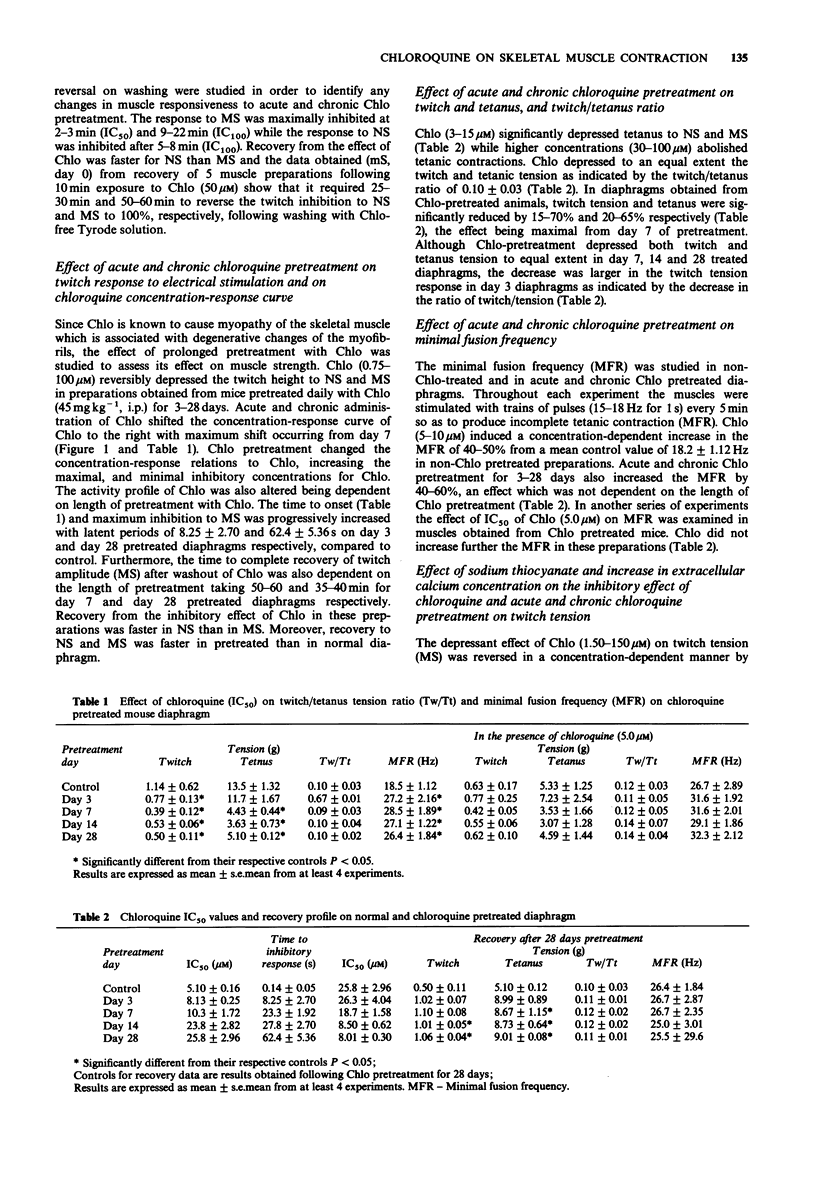
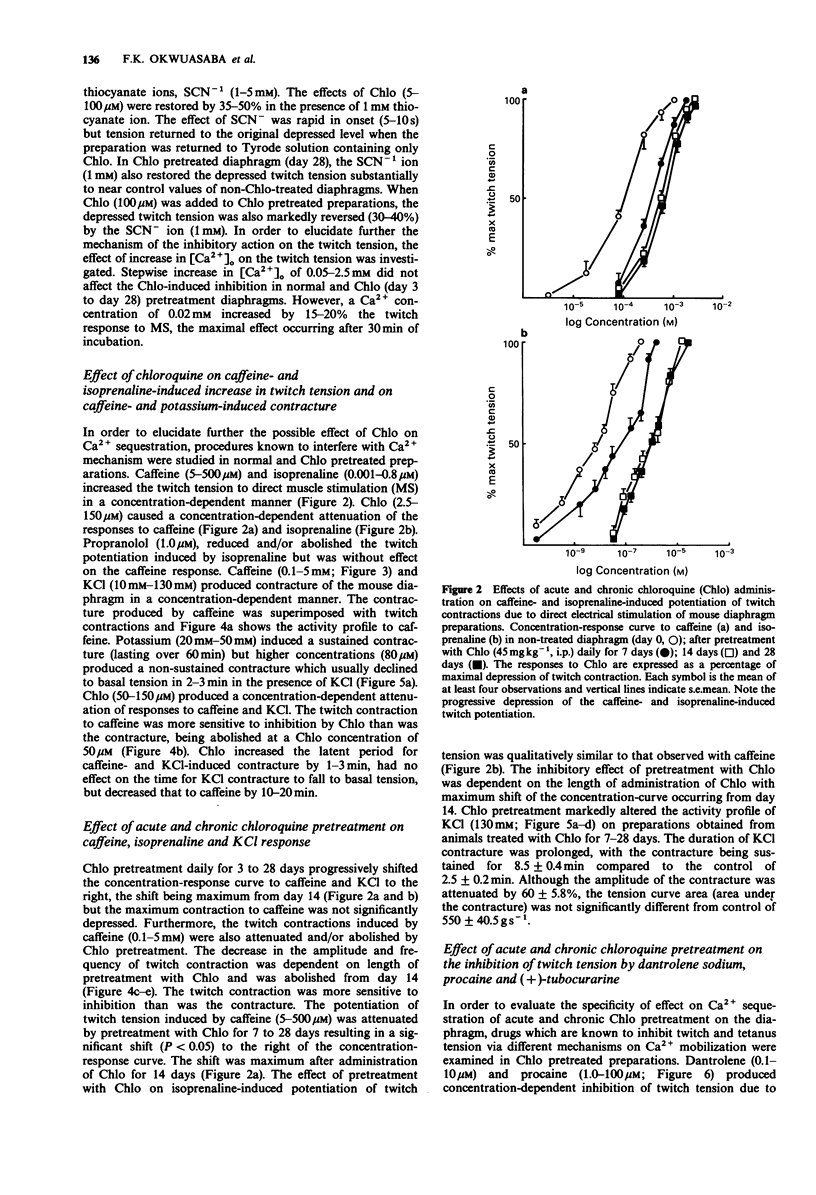
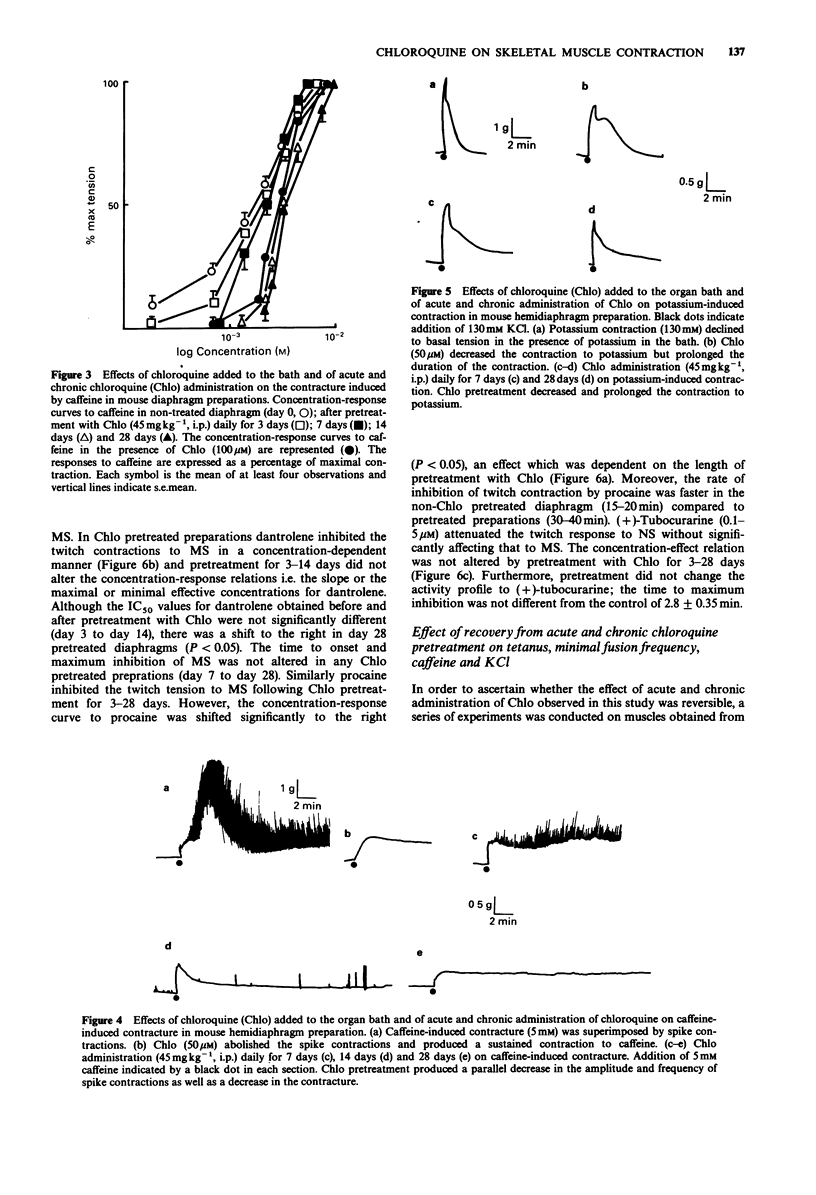
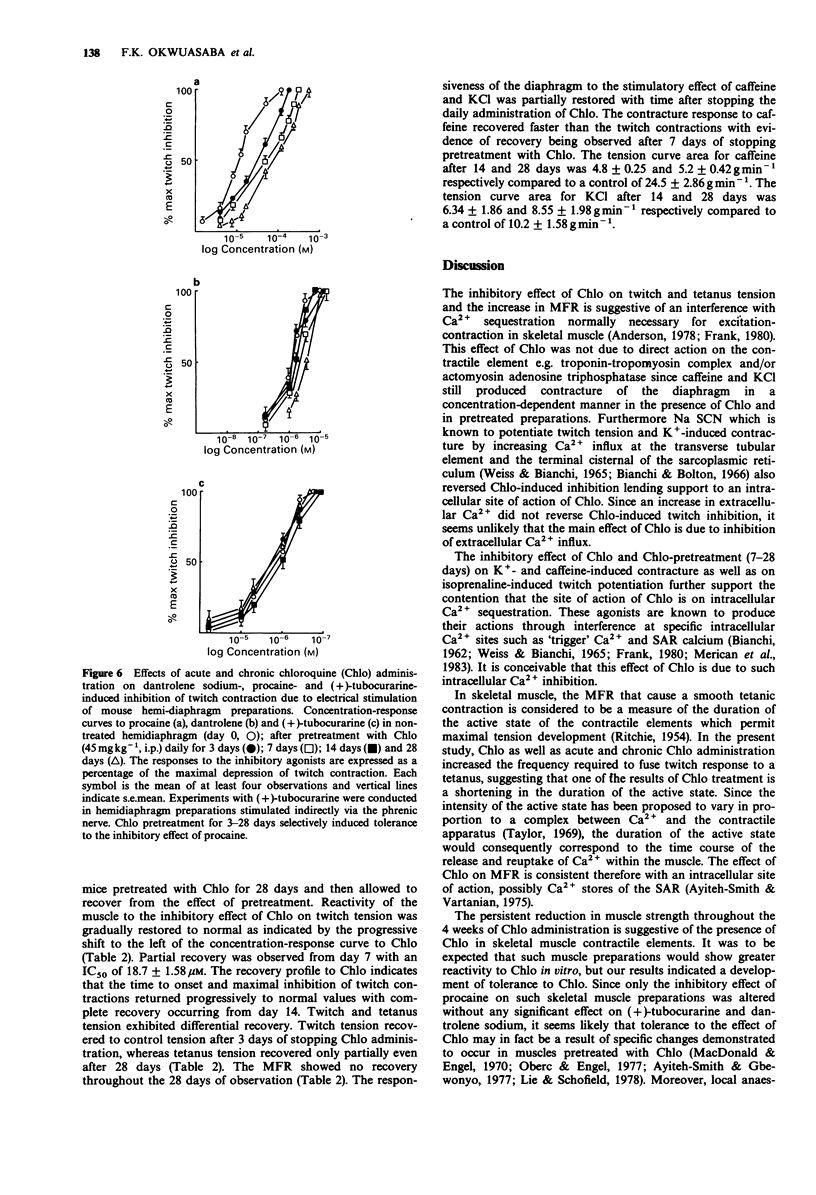
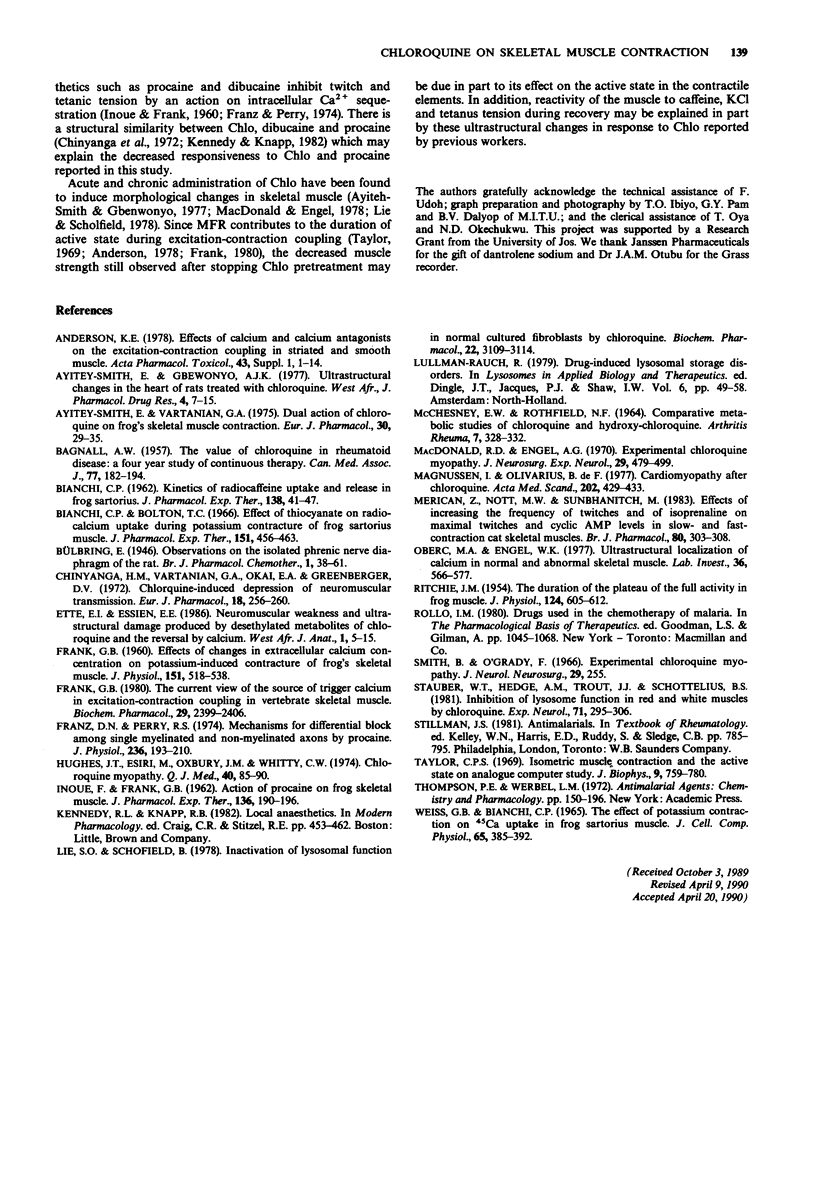
Selected References
These references are in PubMed. This may not be the complete list of references from this article.
- Ayitey-Smith E., Gbewonyo A. J. Ultrastructural changes in the heart of rats treated with chloroquine. West Afr J Pharmacol Drug Res. 1977 Jun;4(1):7–15. [PubMed] [Google Scholar]
- Ayitey-Smith E., Vartanian G. A. Dual action of chloroquine on frog's skeletal muscle contraction. Eur J Pharmacol. 1975 Jan;30(1):29–35. doi: 10.1016/0014-2999(75)90198-3. [DOI] [PubMed] [Google Scholar]
- BAGNALL A. W. The value of chloroquine in rheumatoid disease: a four-year study of continuous therapy. Can Med Assoc J. 1957 Aug 1;77(3):182–194. [PMC free article] [PubMed] [Google Scholar]
- BIANCHI C. P. Kinetics of radiocaffeine uptake and release in frog sartorius. J Pharmacol Exp Ther. 1962 Oct;138:41–47. [PubMed] [Google Scholar]
- Bianchi C. P., Bolton T. C. Effect of thiocyanate on radiocalcium uptake during potassium contracture of frog sartorius muscle. J Pharmacol Exp Ther. 1966 Mar;151(3):456–463. [PubMed] [Google Scholar]
- Chinyanga H. M., Vartanian G. A., Okai E. A., Greenberger D. V. Chloroquine-induced depression of neuromuscular transmission. Eur J Pharmacol. 1972 May;18(2):256–260. doi: 10.1016/0014-2999(72)90250-6. [DOI] [PubMed] [Google Scholar]
- FRANK G. B. Effects of changes in extracellular calcium concentration on the potassium-induced contracture of frog's skeletal muscle. J Physiol. 1960 Jun;151:518–538. doi: 10.1113/jphysiol.1960.sp006457. [DOI] [PMC free article] [PubMed] [Google Scholar]
- Frank G. B. The current view of the source of trigger calcium in excitation-contraction coupling in vertebrate skeletal muscle. Biochem Pharmacol. 1980 Sep 15;29(18):2399–2406. doi: 10.1016/0006-2952(80)90341-x. [DOI] [PubMed] [Google Scholar]
- Franz D. N., Perry R. S. Mechanisms for differential block among single myelinated and non-myelinated axons by procaine. J Physiol. 1974 Jan;236(1):193–210. doi: 10.1113/jphysiol.1974.sp010430. [DOI] [PMC free article] [PubMed] [Google Scholar]
- Hughes J. T., Esiri M., Oxbury J. M., Whitty C. W. Chloroquine myopathy. Q J Med. 1971 Jan;40(157):85–93. [PubMed] [Google Scholar]
- Lie S. O., Schofield B. Inactivation of lysosomal function in normal cultured human fibroblasts by chloroquine. Biochem Pharmacol. 1973 Dec 1;22(23):3109–3114. doi: 10.1016/0006-2952(73)90197-4. [DOI] [PubMed] [Google Scholar]
- Macdonald R. D., Engel A. G. Experimental chloroquine myopathy. J Neuropathol Exp Neurol. 1970 Jul;29(3):479–499. doi: 10.1097/00005072-197007000-00010. [DOI] [PubMed] [Google Scholar]
- Magnussen I., de Fine Olivarius B. Cardiomyopathy after chloroquine treatment. Acta Med Scand. 1977;202(5):429–431. doi: 10.1111/j.0954-6820.1977.tb16857.x. [DOI] [PubMed] [Google Scholar]
- Merican Z., Nott M. W., Sunbhanich M. Effects of increasing the frequency of twitches and of isoprenaline on maximal twitches and cyclic AMP levels in slow- and fast-contracting cat skeletal muscles. Br J Pharmacol. 1983 Oct;80(2):303–308. doi: 10.1111/j.1476-5381.1983.tb10034.x. [DOI] [PMC free article] [PubMed] [Google Scholar]
- Oberc M. A., Engel W. K. Ultrastructural localization of calcium in normal and abnormal skeletal muscle. Lab Invest. 1977 Jun;36(6):566–577. [PubMed] [Google Scholar]
- RITCHE J. M. The duration of the plateau of full activity in frog muscle. J Physiol. 1954 Jun 28;124(3):605–612. doi: 10.1113/jphysiol.1954.sp005132. [DOI] [PMC free article] [PubMed] [Google Scholar]
- Smith B., O'Grady F. Experimental chloroquine myopathy. J Neurol Neurosurg Psychiatry. 1966 Jun;29(3):255–258. doi: 10.1136/jnnp.29.3.255. [DOI] [PMC free article] [PubMed] [Google Scholar]
- Stauber W. T., Hedge A. M., Trout J. J., Schottelius B. A. Inhibition of lysosomal function in red and white skeletal muscles by chloroquine. Exp Neurol. 1981 Feb;71(2):295–306. doi: 10.1016/0014-4886(81)90090-x. [DOI] [PubMed] [Google Scholar]
- Taylor C. P. Isometric muscle contraction and the active state: an analog computer study. Biophys J. 1969 Jun;9(6):759–780. doi: 10.1016/s0006-3495(69)86416-7. [DOI] [PMC free article] [PubMed] [Google Scholar]
- Weiss G. B., Bianchi C. P. The effect of potassium concentration on Ca45 uptake in frog sartorius muscle. J Cell Physiol. 1965 Jun;65(3):385–392. doi: 10.1002/jcp.1030650312. [DOI] [PubMed] [Google Scholar]


